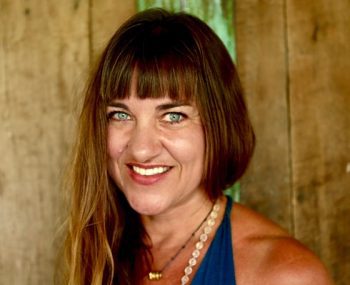By Lissa Rankin
Guest writer for Wake Up World
Desire. How easily it confuses us! To live a deeply fulfilling life, are we meant to follow the teachings of dominant culture, which encourage us to “Just do it,” grasping for our desires, using will and force to “make it happen?” Or are we supposed to visualize, affirm, meditate, and create vision boards about what we desire so we can leverage our spiritual power to “manifest” our wishes? Are we better off surrendering our desires to some Higher Power, leaving only the desire to align with Divine Will? Are we meant to lean into our desire as Rumi and the Sufis do—reveling in the deliciousness of unmet longing as a path to that which we ultimately desire—the Beloved?
In both worldly and spiritual traditions, desire can leave us with our panties in a wad of bewilderment, yet, perhaps if we can handle the discomfort of holding infinite paradoxes, we can feel the unbearably pleasurable experience of leaning all the way into our desires while simultaneously trusting a mysterious force of love that participates in the co-creation of our desires—and also dismantles them.
[pro_ad_display_adzone id=”110028″]
Whether we like it or not, desire is a force to be reckoned with by us mortal Divine humans. To suggest that it’s even possible to be some desire-less zombie can be misleading and befuddling. But even if it were possible, why would we want to disconnect ourselves from the sweet nectar of our juiciest longings? After all, every creation begins as a desire — every baby born into the world, every story that becomes a book, every kiss that becomes a partnership, every sculpture that emerges from the marble’s desire to become something beautiful and the artist’s desire to participate with this creative impulse. This oh-so-human “daemonic” impulse (not to be confused with the “demonic”) carries within it both the life force and the death force. If we suppress the life force inherent in healthy desire, it comes out sideways, either in its fiery forms of violence, rage, and abuses of power, or in its life force-dimming loss of vitality via depression, anxiety, chronic illness, decreased libido, addiction, and suicidal ideation.
Yet grasping for everything we desire doesn’t seem to create lasting fulfillment either. Expending all of your energy trying to fill some “hungry ghost” hole inside rarely works. No amount of sex, money, fame, achievement, or hedonistic pleasure fulfills us for long. In The How Of Happiness, professor Sonja Lyubomirsky, PhD shares the data about what makes us more happy—and what doesn’t. It turns out that, because of “hedonistic adaptation,” only 10% of our happiness depends on the fulfillment of our desires. In other words, even if you get everything you think you want, your happiness will only improve a small amount. Although you may feel happier temporarily, very quickly, this effect wears off, and you’re likely to start grasping for the next shiny, sparkly thing.
So what is a yearning, longing, deliciously hungry being supposed to do with all this human longing? Distancing yourself from your desires doesn’t seem to work either. Pretending to be non-attached and numbing your deepest desires fools nobody, especially not your precious, wanting human heart. This spiritual bypassing tool may make you feel less vulnerable, but really this pain-avoidance technique of pretending you don’t want what you want only leaves the vulnerable, longing part feeling exiled. You may feel like you hurt less if you pretend you don’t have desires, but deep down, the exiled longing part is a hurting thing, just craving your love, affection, and acknowledgment.
Like it or not, to be human is to want.
The Buddha suggests that all suffering arises from the attachment to the desire to get what we want and avoid what we don’t want, but what if we don’t need to run away from suffering? What if it’s the running away from suffering that saps our life force? What if these natural human cravings and aversions are a vital part of the human experience, and pain is an alchemical crucible inviting us into a deeper, richer life, something we don’t need to avoid, something we could actually lean into—with gratitude, even—if only we dared.
Love warrior Glennon Doyle Melton teaches that we run away from our desires because if we actually stay in the fire of them, we have to feel the “hot loneliness” that accompanies unrealized desires. Because we don’t like feeling the hot loneliness, we have a tendency to look for “Easy buttons” that can help us avoid feeling it. But what if the hot loneliness is not something to run away from either?
Glennon writes, “Everything we need to become the people we were meant to become next is actually inside the hot loneliness of now. So when we Easy button our way out, we are like caterpillars who jump out of the cocoon right before we would have become butterflies. Because pain is actually not a hot potato. It’s the traveling professor, and it knocks on everybody’s door. The wisest ones say, ‘Come in. Sit down, and don’t leave until you’ve taught me what I need to know.’ But we’ve got it all wrong. We are afraid of pain, but we were made for pain. We need to be afraid of the Easy buttons. Because the journey of the Love Warrior is to rush toward her pain and let her pain become her power.”
What if our desires—whether realized or not—can become a tool for transformation? What if what we most want actually lives inside the ecstasy and the agony of our most vulnerable longings? Mystics express that our deepest desire is to experience our own wholeness, to feel our Oneness with all things, to dive into the rapture of simply being alive, and to fall in love with and unite with the Divine Beloved inside our own hearts. Yet, as humans, we all bear the Original Wound of separation. We were once part of the collective ocean, and then by splitting off our consciousness as a drop of the ocean and incarnating in a body, we feel an almost unbearable longing to be part of the ocean again.
We may be blessed to experience the fulfillment of this desire for Oneness in moments of ecstasy—during rapturous sex or deep meditation or expanded consciousness out in nature or while using plant medicines. Yet such experiences of mystical union are usually temporary, wearing off as the story of separation takes hold again, leaving us with the agonizing memory of how fulfilling it feels to be the ocean and how sad, lonely, and despairing it can feel when we are a separate drop!
So what is a healthy human daemon to do? Dare we chase after all the fickle desires that capture our attention? Or are we better off ignoring all those shiny, sparkly distractions? How can we handle the many songs of desire that sing in our hearts, longing for expression and fulfillment? Dare we allow ourselves the vulnerability of actually feeling our deepest unmet longings all the way?
Recommended articles by Lissa Rankin:
- Pleasure as a Spiritual Path
- The Unmistakable Link Between Unhealed Trauma and Physical Illness
- Satisfying Our Emotional Needs Without Being Codependent
- Relationships on the Spiritual Path
- How to Make Your Body Ripe for Miracles
- Are You “Spiritual But Not Religious?”
- 10 Fun Ways to Reduce Your Cortisol Levels
- 6 Stories To Make You Believe In The Power Of The Mind To Heal You
- 7 Tips For Finding Your Tribe
- Holding Space When Someone Is In Pain
- 10 Surprising Things That Trigger “Fight-Or-Flight”
About the authors:
Lissa Rankin, MD is a mind-body medicine physician on a grass roots mission to heal healthcare, while empowering you to heal yourself. She is the founder of the Whole Health Medicine Institute training program for physicians and healthcare providers, and the New York Times bestselling author of the books Mind Over Medicine: Scientific Proof That You Can Heal Yourself (2013), The Fear Cure (2014), and The Anatomy of a Calling (2015).
Lissa blogs at LissaRankin.com and created the online community HealHealthCareNow.com. She is also the author of several other books, a speaker, a professional artist, an amateur ski bum, and an avid hiker. She lives in the San Francisco Bay area.
Connect with Lissa on Facebook and Twitter, or visit LissaRankin.com.
[pro_ad_display_adzone id=”110027″]









